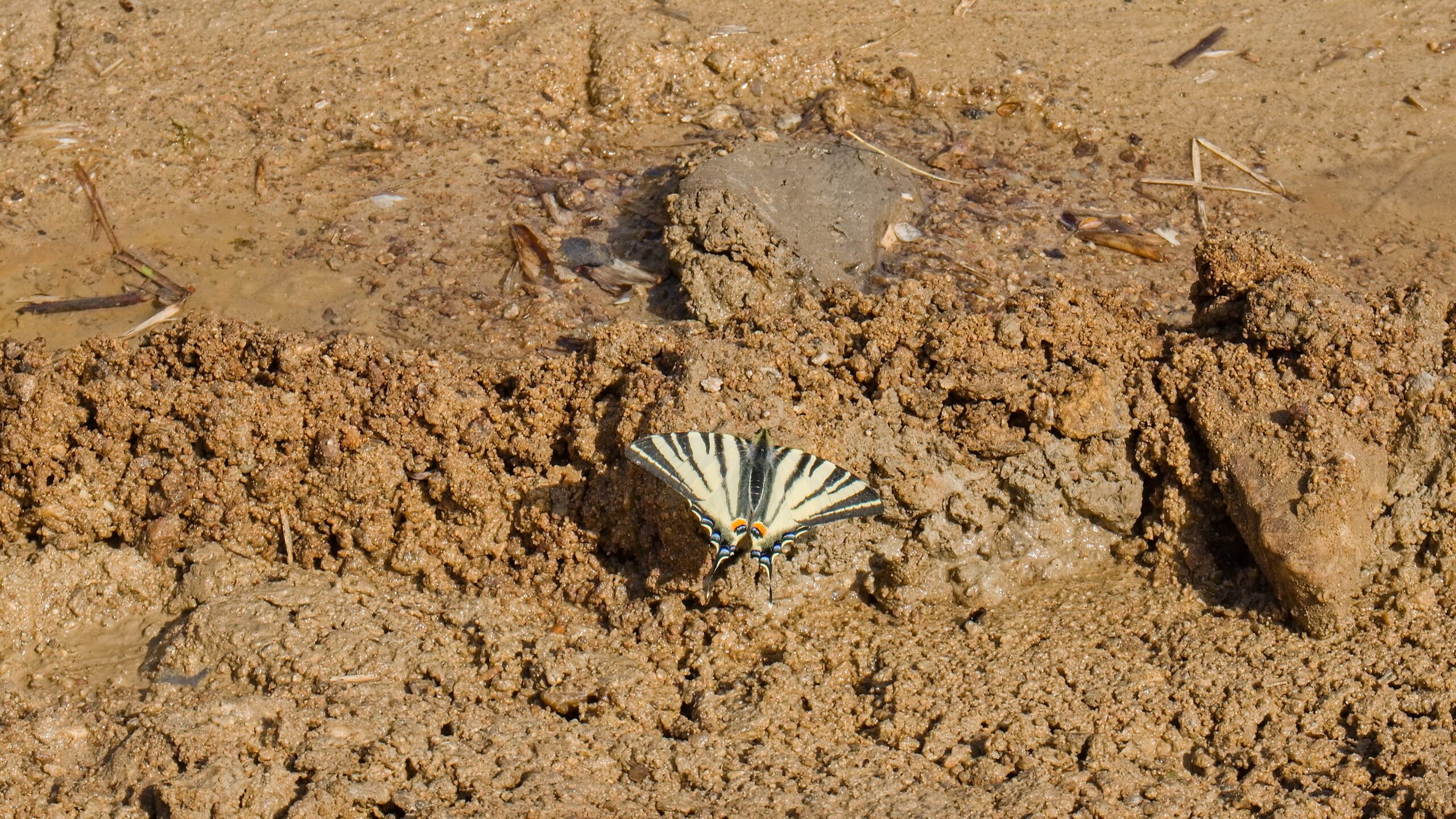With this project, we anticipated that the ponds’ varying depths and shore steepness would create a rich mosaic of microhabitats, supporting a wide variety of specialized species. Shallower and temporary ponds are expected to provide ideal conditions for species such as the Fire-bellied Toad (Bombina bombina). In contrast, the deeper ponds are better suited to species like the Italian Crested Newt (Triturus carnifex) and the Common Spadefoot (Pelobates fuscus), which require more permanent aquatic environments.
Immediately after the construction was completed, the bare, wet shores attracted a range of insects seeking moist, mineral-rich ground. Several butterfly and bee species were observed sipping water and minerals from the wet soil, highlighting the immediate ecological benefits of the new habitat. In the coming years, we expect the pond system to undergo further ecological succession. Due to periodic drying, some areas may gradually develop saltmarsh-like characteristics, potentially attracting saltmarsh specialists and further enhancing the biodiversity value of the site.
